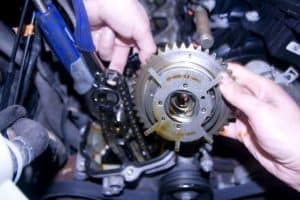It can be confusing when you see the warning message “check fuel fill inlet” appear on the dashboard of your car or truck. What does “check fuel fill inlet” mean?
The message “check fuel fill inlet” means an evaporative emissions (EVAP) leak near or at the fuel tank fill inlet. You should check if the gas tank has been properly closed and that the inlet pipe has no leaks.
Read on to learn more about the meaning of “check fuel fill inlet,” as well as the causes and solutions for this issue.
Check Fuel Fill Inlet
When you see a check fuel fill inlet on your dashboard, this is an indication that there is an EVAP leak or evaporative emissions nearby the fuel tank fill inlet. Moreover, this also tells you to check if the gas tank has been closed correctly.
Three common vehicles which may display this message are the following:
- Ford Fusion
- Ford Escape
- Ford F150 truck
You should pay attention to the check fuel fill inlet Ford warnings, as they point out that there are issues with your fuel cap or evaporation system or a leak somewhere.
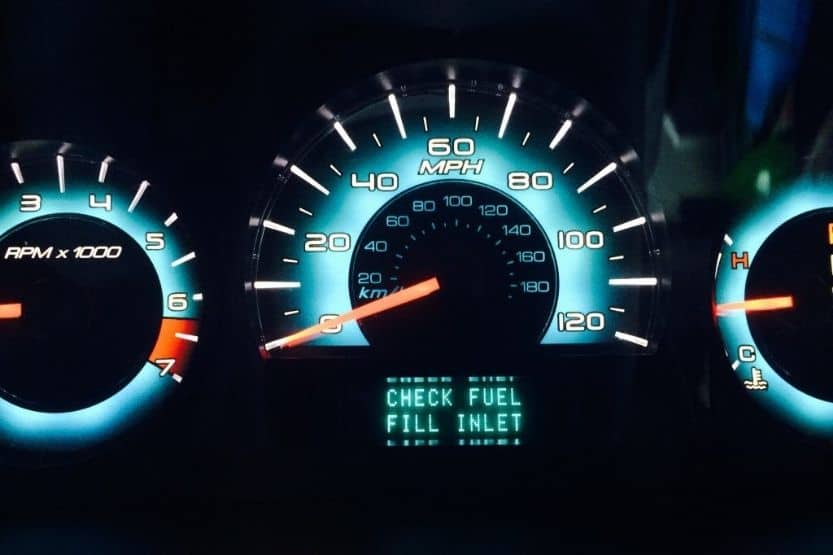
What Is a Fuel Fill Inlet Cap?
The fuel fill inlet leads to the fuel tank, while the fuel caps cover the fuel fill inlet. Fuel fill inlets are made of plastic or metal. So, fuel caps are a crucial part of the vehicle evaporative emissions system because they stop fuel and vapor leaks.
Check Fuel Cap – What Does It Mean? How to Fix?
What Does “Check Fuel Inlet” Mean on the Ford Fusion?
The check fuel fill inlet Ford Fusion warning means that the fuel fill inlet may not have closed properly or there is a problem with the gas cap or fuel fill inlet.
Damage to the fuel inlet or improper placement of the fuel cap may cause decreased gas mileage, fuel leaks, and other EVAP system problems.
Solution
You should check the fuel fill inlet and the fuel tank if you closed it properly. If you have sealed the fuel fill inlet properly, the engine light should go off when you start driving the car for a mile or so.
What Does “Check Fuel Inlet” Mean on the Ford Escape?
The check fuel fill inlet Ford Escape warning comes when you have a loose fuel cap. The message usually appears on your dashboard when an evaporative leak occurs near the fuel filler inlet or on the filler inlet itself. The phrase means the same thing as when the warning appears on your Ford Fusion.
Solution
You should check the fuel fill inlet to see if you threaded it correctly. You should always ensure that you have sealed the inlet and the gas tank. Again, remove all visible debris or dirt on the fuel fill opening.
What Does “Check Fuel Inlet” Mean on the F150?
The check fuel fill inlet F150 warning comes for the same reason as the Ford Fusion and Ford Escape. This message appears when the fuel fill inlet is not correctly closed, or there is debris or foreign objects stuck in the inlet’s opening, preventing it from closing fully.
Solution
Clean the fuel inlet opening and reinstall the cap, ensuring that it is done correctly and there is no debris preventing the flap from closing properly.
Common Causes of the “Check Fuel Fill Inlet” Warning
Here are some of the causes of the “check fuel inlet” warning:
- Improperly closed fuel tank;
- Missing fuel cap;
- Debris or foreign objects stuck at the opening;
- Vacuum pressure leak;
- Leaking evaporative emissions system;
- Tightly screwed fuel cap;
- Loose fuel cap that covers the fuel fill inlet; and
- A broken gas cap that covers the fuel fill inlet.
Solutions to “Check Fuel Fill Inlet” Warning
How do you fix the “check fuel fill inlet” warning? Here are some solutions you should try:
- Close the fuel tank properly;
- Replace a missing cap;
- Clean the opening of the fuel fill inlet;
- Screw the fuel cap just tight enough to prevent leaks (not too tight); and
- Replace broken gas caps.
How to Know When Your Fuel Filler Cap Is Broken or Damaged?
Aside from getting a “Check Fuel Fill Inlet” message, here are other symptoms that your fuel filler cap is faulty:
1. “Check Engine Light” Is Turned On
The gas light turns on and off once you have solved the issue. The light may not turn off immediately after preventing further evaporative emissions. But don’t worry, as it would eventually turn off as you drive.
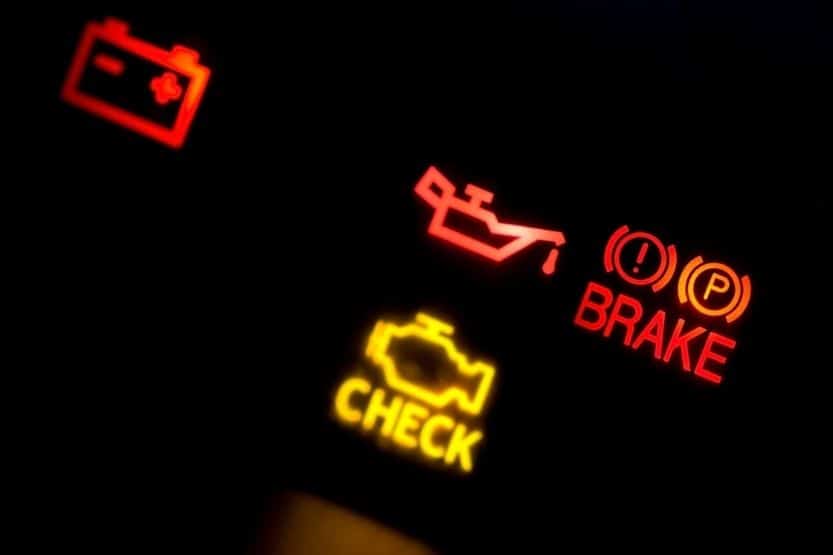
2. Gas Odor That Stays
You may smell gas inside your vehicle, and it does not disappear; your fuel cap is broken. The leaking gas or fuel vapors come from the gas tank you haven’t properly closed.
The odor may dissipate with the air, but the gas may accumulate and combust if your vehicle is enclosed. You should open your windows so that gas is quickly blown away by air.
3. Through Physical Examination
By physically examining the gas cap, you can find out if there are cracks, breaks, or damages. If you notice any cracks or damages, you have to replace the gas cap as soon as possible. Ignoring small issues could lead to more significant problems.
4. A Loose Cap
If the cap is loose and does not screw properly, it is an indication that it is damaged. Even without visually examining the cap, you can conclude it needs replacement. You have to replace the cap and double-check that you have closed it correctly.
There may be rare times when a new cap will not fit properly; you have to replace this cap as well. It is also not a perfect fit for your vehicle.
Check Fuel Fill Inlet – Capless Vehicle
What to do with a broken capless fuel inlet? If you have a capless fuel fill inlet, you can take your vehicle to your car dealer and have the part replaced with a new one. You may be able to repair the broken area, but it would eventually break again. So it is best to replace it and enjoy a smooth drive.
What Happens When the Fuel Cap Seal Becomes Broken or Damaged?
When the gas or fuel cap seal becomes broken or damaged, the fuel vapors will leak to the filler neck. Some car experts say that driving without your gas cap will not deliver harmful fumes inside your vehicle because of the built-in flaps.
The cap will also prevent external contaminants and debris from entering the fuel tank.
But when your gas tank is not covered adequately with a gas cap, harmful fumes and pollutants may find their way into the environment.
The dashboard gas cap light will be on until you have replaced the gas cap. What’s more, you may experience decreased mileage, stalling, and erratic idle.
How to Check the Car’s Fuel Fill Inlet
1. Visually Inspect the Car’s Fuel Fill Inlet
Scrutinize the fuel fill inlet. If it is too dark, use a flashlight to inspect the fuel fill inlet’s interior and exterior. Search for any tears, cracking, or damages. Even a slight tear could lead to major cracks later on.
2. Visually Inspect the Fuel Cap and Seal
Afterward, inspect the fuel cap and the seal found between the filler tube and the gas cap. The seal should be unbroken, and there should not be any cracks. The fuel cap must also be intact and correctly in place.
3. Replace Any Damaged Parts
After the visual inspection, you have to replace any damaged parts quickly. You may ask a car mechanic to help you out. Settle only for brand new replacements so that the fuel fill inlet lasts longer.
4. Check the Dashboard Display
If you have replaced the damaged parts correctly, the dashboard will not display any warnings. If a message still appears on your dash, perform the steps again, inspecting all of the areas connected to your fuel inlet.
These steps would ensure that you notice any cracks early on and prevent significant damage to your fuel fill inlet. Perform these steps twice a week or once a month to ascertain that your system is working smoothly and efficiently.
“Check fuel fill inlet” usually shows when there is an evaporative emission (EVAP) leak nearby or at the fuel tank fill inlet. This display is also an indication of an issue with the fuel cap.
Vehicles that are capable of giving you this warning are the following:
- Ford Fusion,
- Ford Escape, and
- Ford F150 truck.
Tips for Responding to the “Check Fuel Fill Inlet” Message
1. Check Your Vehicle As Soon As the Message Appears
Immediately after the message “check fuel fill inlet” appears on your dashboard, stop the vehicle on a side road and check your fuel fill inlet. Don’t disregard the warning, as the improperly covered fuel tank can leak evaporative emissions.
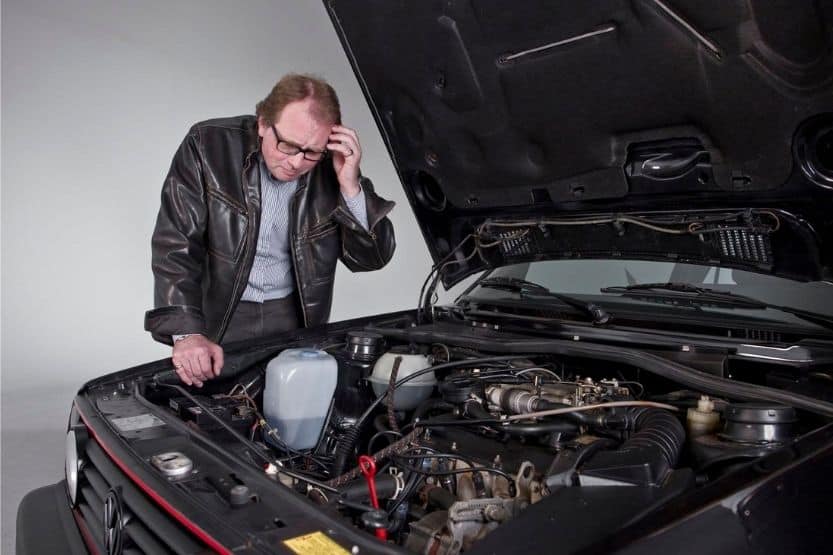
2. Replace Broken and Damaged Caps Immediately
When the cap or flap is broken or damaged, replace it immediately. The absence of the cap fuel seal may not damage your engine, but there may be issues with the surrounding parts. Being careful would prevent accidents from happening.
3. The “Capless Fuel System” and the “Fuel Fill Inlet” Are the Same
These two phrases refer to the same thing. When you hear your car mechanic talking about the fuel fill inlet, the person also talks about the capless fuel system. Although it is termed ‘capless,’ the system still applies caps and flaps to prevent fuel leaks.
So “check fuel fill inlet” capless and non-capless refer to the same fuel leak issue.
4. The “Check Fuel Fill Inlet” Message Should Disappear Afterwards
After resolving the issue, the message and the gas light should disappear. Nonetheless, it may not reset immediately. You may have to drive a few miles before the light and message “check fuel fill inlet” would turn off.
5. Read the Owner’s Manual When Unsure About What to Do
You may want to read the owner’s manual when you do not know what to do. If you are unfamiliar with fuel fill inlets, another option is to take your vehicle to the automotive center for servicing.
But since you are driving, it would be best to learn the basics from your manual. Take the time to read it.
6. Clean the Fuel Fill Inlet Regularly
It would be best to scrub the fuel fill inlet regularly to prevent debris build-up. Debris build-up can prevent the flaps from closing correctly, causing fuel leaks. If you’re not confident and skilled enough to do it, you can always take your car to an efficient motor shop.
7. Ensure That Your Vehicle’s Fuel Fill Inlet Repair Is Included in the Warranty
Vehicle warranties usually include the whole car’s repair, including the fuel fill inlet. But some may have an extended warranty. You may want to ask the car dealer about this specific car part. It is best to pay attention to the details of your warranty.
8. The Fuel Tank Needs to Be Pressurized
The fuel tank needs to be pressurized for the gas to flow smoothly and for the sensors and the fuel system to function efficiently. You can make sure it is pressurized by placing the fuel cap accurately.
The car’s engine system may properly function for some time, but the car’s sensors are sensitive and detect the defect immediately. The sensors may display a faulty evaporation system on your car’s dashboard.
Dos and Don’ts of Maintaining Efficient Fuel Fill Inlets
- Act on a check fuel fill inlet message immediately.
- Do follow your car’s maintenance service schedules.
- Check your fuel fill inlet every time you refuel.
- Do read your owner’s manual before touching any part of the fuel fill inlet.
- Do use the correct fuel to prevent damage to your inlets.
- Don’t allow debris to build up in your fuel fill inlets.
- Fix the minor cracks in your capless fuel inlets.
- Don’t replace damaged flaps fuel inlets without finding out the reason.
- Deal with “check fuel fill inlet’ warnings.
- Don’t do it yourself if you know nothing about repairing vehicles.
Conclusion – What Does Check Fuel Fill Inlet Mean?
The warning message ‘Check fuel fill inlet’ means an evaporative emissions (EVAP) leak near or at the fuel tank fill inlet.
When the warning appears on your dashboard, you should find out if you have correctly closed the gas tank and if there are no leaks in the inlet pipe.
After resolving the problem, the message on your dash and the gas light should turn off. Your vehicle may not reset immediately, and the warning would still appear, but don’t worry, keep driving; after a few miles, the light and warning would eventually turn off.
Related reading:

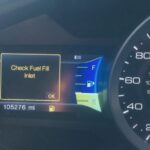
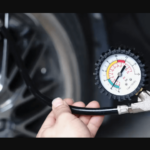
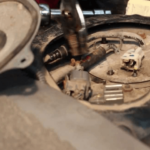
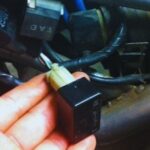
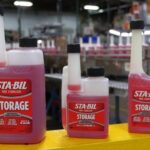
![Best Fuel Stabilizer [10 Top Stabilizers] best fuel stabilizer](https://roadsumo.com/wp-content/uploads/2022/01/best-fuel-stabilizer-150x150.jpg)

![Read more about the article Ford Vehicle Order Tracker [How to Track Your Order]](https://roadsumo.com/wp-content/uploads/2022/05/Ford-vehicle-order-tracker-300x200.jpg)
